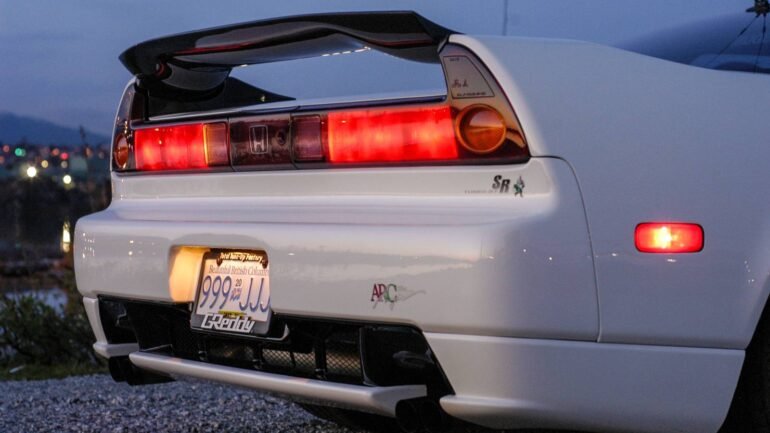For decades, supercars have dominated the collector market, promising prestige, speed, and exclusivity. But in recent years, a surprising shift has occurred: Japanese Domestic Market (JDM) legends are becoming the true investment stars. Cars like the Nissan Skyline GT-R, Toyota Supra, and Mazda RX-7 once seen as attainable performance machines for enthusiasts are now commanding prices that rival or even surpass traditional European exotics. Their combination of rarity, cultural significance, and strong global demand has transformed them into rolling assets, with auction results proving that these cars aren’t just for driving thrills they’re serious financial investments.
In order to give you the most up-to-date and accurate information possible, the data used to compile this article was sourced from various manufacturer websites and other authoritative sources.
From Affordable Icons To Priceless Collectibles
In the 1990s, the Nissan Skyline GT-R, Toyota Supra, and Mazda RX-7 were marketed as high-performance sports cars that enthusiasts could realistically afford. They weren’t built to be garage queens; they were engineered to dominate mountain passes, racetracks, and street scenes. Priced within reach of middle-class buyers, these cars offered a level of performance that rivaled much more expensive European machinery.
Ultra-rare variants like the Supra’s Turbo A, R34 GT-R V-Spec II Nür, or early NSX Type R are likely to hold and increase in value.
Fast forward three decades, and those once “attainable” machines have skyrocketed in value. Clean R34 Skylines now command six-figure sums, and low-mileage Supras have crossed auction blocks for prices that would make Ferrari owners blush. What began as everyday heroes for Japanese enthusiasts has evolved into a global collector phenomenon. The same cars that once lined Tokyo’s streets and featured in tuner garages are now treated as museum pieces—proof that humble beginnings can lead to priceless status.
Why JDM Cars Are Outperforming Supercars in Value
The appreciation of JDM legends isn’t just hype—it’s rooted in economics. Unlike European supercars, which were produced in relatively higher volumes and often suffer heavy depreciation after initial sales, many iconic JDM models had limited production runs. Their restricted availability outside Japan only intensified their desirability once 25-year import rules made them legal in new markets.
Cultural cachet adds another dimension. JDM cars were immortalized in Gran Turismo, Fast & Furious, and anime series like Initial D, embedding them in global pop culture in ways Lamborghinis and Ferraris never quite achieved with younger audiences. As a result, demand keeps climbing, especially among millennials entering their prime earning years. Compared to supercars that rely heavily on badge prestige, JDM icons offer a more authentic, emotional connection—and investors are noticing the difference on auction charts.
The Standout JDM Models Driving Auction Prices Up
Among JDM collectibles, a handful of models have become standouts in driving record-breaking values. The Nissan R34 Skyline GT-R, nicknamed “Godzilla,” has consistently been the poster child of this surge, with pristine examples regularly crossing the $300,000 mark. Similarly, the Toyota Supra Mk4—especially the twin-turbo, manual versions—has evolved from a tuner’s dream into a blue-chip asset.
The Mazda RX-7 FD is another darling of the market, with its lightweight rotary charm and timeless styling commanding respect. Honda’s original NSX, the car that humbled Ferrari in the ’90s, has also surged as collectors realize its significance as a Japanese supercar pioneer. Even rally-inspired sedans like the Mitsubishi Lancer Evolution VI and VIII are gaining traction, showing that the demand extends beyond coupes to performance legends across categories. Together, these models are proving that Japan’s performance heritage can rival and even eclipse traditional European collectibles.
The Role Of Nostalgia And Global Enthusiast Culture
The biggest fuel for the JDM investment boom is nostalgia. Millennials and Gen X buyers, who grew up idolizing these cars through video games, movies, and tuner magazines, are now financially positioned to buy the dream machines of their youth. Owning an R34 GT-R isn’t just about horsepower—it’s about reclaiming the excitement of playing Gran Turismo or watching Brian O’Conner rip through Los Angeles in a Supra.
This cultural impact extends worldwide. From drift scenes in Japan to car meets in the U.S. and Europe, JDM culture has become a shared global language among enthusiasts. Unlike supercars, which are often admired from a distance, JDM icons feel personal—cars that could realistically have been owned, modified, and raced by their fans. That authenticity translates into demand that transcends borders, making these cars irresistible to collectors seeking both emotional and financial returns.
What Collectors Should Know Before Buying In
While JDM legends offer tantalizing investment potential, prospective buyers need to be savvy. Import restrictions, especially the U.S. 25-year rule, dictate when certain models become legal, creating both opportunities and inflated hype cycles. Maintenance is another concern—rotary engines like the RX-7’s require specialist care, and sourcing parts for Skylines can be increasingly expensive as OEM supplies dwindle.
Collectors should also weigh which models offer the best long-term upside. Ultra-rare variants like the Supra’s Turbo A, R34 GT-R V-Spec II Nür, or early NSX Type R are likely to hold and increase in value. But even “lesser” trims can still be rewarding investments if bought well and maintained properly. In a world where traditional supercars often plateau or lose value, JDM icons continue to represent not just driving pleasure, but also some of the most promising returns in the automotive collector market today.





